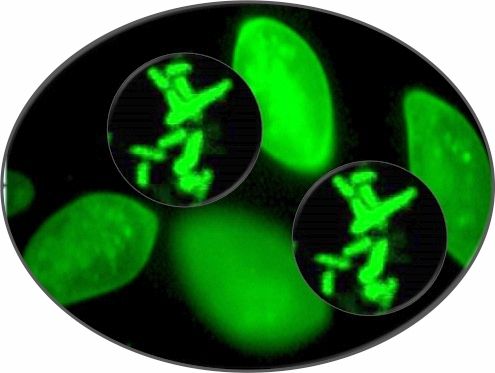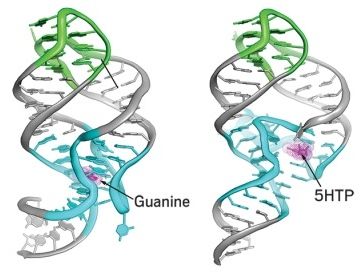The speed with which microbes in a simplified ecosystem absorb the nanomaterials is raising concerns about the effect on organisms higher in the food chain.


That’s a relief.
Of all the potentially apocalyptic technologies scientists have come up with in recent years, the gene drive is easily one of the most terrifying. A gene drive is a tool that allows scientists to use genetic engineering to override natural selection during reproduction. In theory, scientists could use it to alter the genetic makeup of an entire species—or even wipe that species out. It’s not hard to imagine how a slip-up in the lab could lead to things going very, very wrong.
But like most great risks, the gene drive also offers incredible reward. Scientists are, for example, exploring how gene drive might be used to wipe out malaria and kill off Hawaii’s invasive species to save endangered native birds. Its perils may be horrifying, but its promise is limitless. And environmental groups have been campaigning hard to prevent that promise from ever being realized.
This week at the United Nations Convention on Biodiversity in Mexico, world governments rejected calls for a global moratorium on gene drives. Groups such Friends of the Earth and the Council for Responsible Genetics have called gene drive “gene extinction technology,” arguing that scientists “propose to use extinction as a deliberate tool, in direct contradiction to the moral purpose of conservation organizations, which is to protect life on earth.”

In Brief
Memories are the faintest, most ethereal wisps of our neurophysiology — somehow, the firing of delicate synapses and the activation of neurons combine to produce the things we remember. The sum of our memories make us who we are; they are us, in every way, and without them we cease to be.
So it’s needless to say that there’s a pretty significant premium on discovering new ways to combat memory loss. Most of these involve physiological and biological methods, but some scientists, such as Theodore Berger of the University of Southern California, are beginning to turn toward technology. If any of these methods are successful, it would mean the possibility of perfect lifelong memory recall.

Scientists simulate evolution in the lab by introducing mutations iteratively into biomolecules such as nucleic acids and selecting for desired properties. When carrying this process out specifically on RNA molecules, they can evolve the RNAs to bind specific small molecules. But many of these so-called aptamers don’t bind well to their targets when put inside cells because they don’t fold into stable structures.
“As we solved the structures of naturally occurring aptamers, we noticed they had much more complex secondary and tertiary structures” than versions made in the lab, says Robert T. Batey of the University of Colorado, Boulder. “So we decided to use these naturally occurring RNA folds as starting points” for producing more stable artificial aptamers.
To prove their concept, Batey and coworkers used RNA sequences from naturally occurring ribozymes and riboswitches as scaffolds to evolve aptamers that bind amino acids and other small molecules used to make neurotransmitters (Nat. Chem. Biol. 2017, DOI: 10.1038/nchembio.2278). The resulting aptamers are selective for these precursor molecules over structurally similar amino acids and the neurotransmitters themselves.

After making significant progress in understanding algae genetics, growth characteristics and increasing oil production, Synthetic Genomics, Inc. and ExxonMobil said they would extended their joint research agreement into advanced algae biofuels.
The two companies have been researching and developing oil from algae for use as a renewable, lower-emission alternative to traditional transportation fuels since 2009. They are seeking to develop strains of algae that demonstrate significantly improved photosynthetic efficiency and oil production through selection and genetic engineering of higher-performance algae strains.


Syn. Neurons via Q-Dot Laser. Nice.
Greek researchers working at the National and Kapodistrian University of Athens (EKPA) optical communication photonic technology laboratory have developed an artificial “neuron” that simulates fundamental functions of the human brain, at speeds that are many orders of magnitude higher.
A paper on the new breakthrough made by the Greek team, led by Prof. Dimitris Syvridis with Dr. Charis Mesaritakis as main researcher and with Alexandros Kapsalis and Adonis Bogris listed as authors, was published in the “Scientific Reports” section of the science journal “Nature” on December 19.
Simulating the action of biological neurons is the “Holy Grail” of computing; the proposal developed by Mesaritakis and his team uses an integrated all-optical neuron based on an InAs/InGaAs semiconductor quantum-dot passively mode-locked laser.

Researchers at MIT’s Computer Science and Artificial Intelligence Laboratory have developed a new computational model of a neural circuit in the brain, which could shed light on the biological role of inhibitory neurons — neurons that keep other neurons from firing.
The model describes a neural circuit consisting of an array of input neurons and an equivalent number of output neurons. The circuit performs what neuroscientists call a “winner-take-all” operation, in which signals from multiple input neurons induce a signal in just one output neuron.
Using the tools of theoretical computer science, the researchers prove that, within the context of their model, a certain configuration of inhibitory neurons provides the most efficient means of enacting a winner-take-all operation. Because the model makes empirical predictions about the behavior of inhibitory neurons in the brain, it offers a good example of the way in which computational analysis could aid neuroscience.
Scientists identify the physical connection through which the prefrontal cortex inhibits instinctive behavior
From fighting the urge to hit someone to resisting the temptation to run off stage instead of giving that public speech, we are often confronted with situations where we have to curb our instincts. Scientists at the European Molecular Biology Laboratory (EMBL) have traced exactly which neuronal projections prevent social animals like us from acting out such impulses. The study, published in Nature Neuroscience, could have implications for schizophrenia and mood disorders like depression.